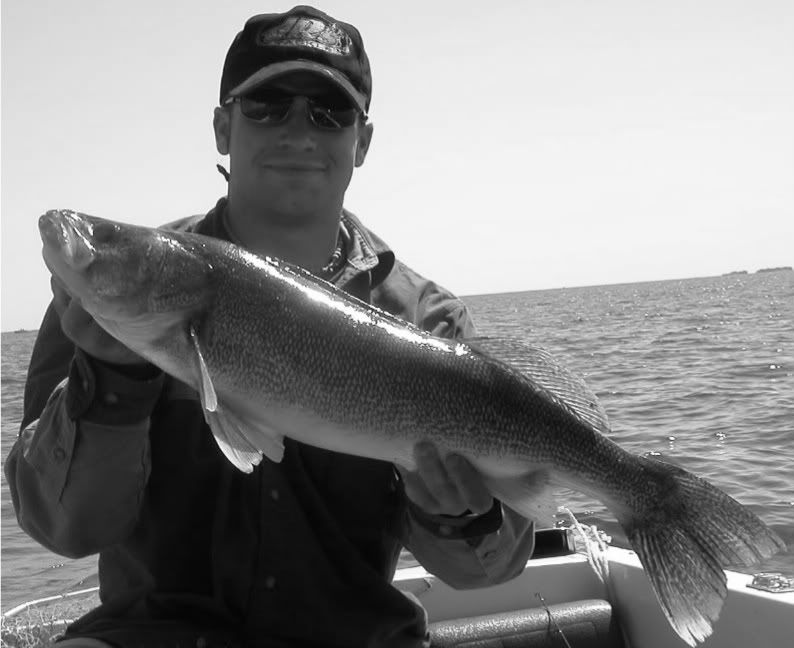
Understanding The Reef Height Theory
Working reefs and structure is no new trick to the game of catching walleyes. What is new and slowly catching on is working fish off structure and suspended. It doesn't matter the season, open water or on ice putting this to the test will often times put the nicest fish and the most fish in your hands. Here is how it has worked and played out the last 5 years of me putting it to work.
I fell on the open water bite ironically not on soft water but on the ice. I was working off the big crowded flats of Mille Lacs mainly looking for perch during the day, but every now and again that big red mark would be suspended off the bottom, sometimes it would be a tullibee but often times it was the nicest fish of the trip. I remembered that until open water and put the method to work. That's been five years ago.
I do believe that all fish are generally lazy. Your not going to drive a half hour to a burger joint when there is one just down the road. Fish are the same, by suspending at the height of the flat, reef or hump, they can monitor what is going on at the “burger joint” and make quick runs across the top, pick off what they want and then settle back out over the deep water.
The tactics are simple and the rewards are great. There are three main ways to tackle these open water fish, the first and one of the most effective ways is lead core. Lead core is solid wire that is color coded per a certain length. It will say right on the box. There are no hard and fast dive charts for leadcore, Typically one color will dive right around 5 if your trolling at 1 mph. You must experiment to find out what works. Typically fishing under 35 feet of water 6 or 7 colors is all you will need depending on crank bait. Now do not tie your crank directly to the wire, rather a ten foot leader of either a no stretch line or a fluorocarbon if you believe the fish are line shy. By doing this, you will be able to see every tic and vibration that crank is doing. Whats nice about leadcore is if your working a transition or a depth, contour trolling the lead core really tracks nice. The key with leadcore is that when you speed up, the drag from the line will pull the bait up and when you slow down the line will sink. This is great when you want to zig zag open water, half of your pattern speeds up while the other slows down. Pay attention to see where your getting bit, everything helps when establishing a pattern. Leadcore allows you to run cranks that normally can not get down there by simply long lining.
The second way to work open water fish is by using snap weight system. Snap weights are a clip on weight that you attach to your line in front of the crank, Its very simple and changing weight is simply unsnapping the weight and changing it out. I typically use the 20 plus method, mainly because its simple and easy. Put a 1 ounce snap weight on 20 feet in front of your crank and your plug will then run 33% deeper on average. This is a great method of getting a #9 shadling down from 13 to 14 feet down to that 17 to 18 foot range. A perfect depth for targeting Mille Lacs walleyes around many flats and reefs.
The third and final way is to simply long line, follow your bible on the dive charts and move water. TD 30s are my favorite crank to long line, 180 feet out and go, will run that bait down to around 28 feet. Wanna work shallower, less line, smaller cranks, its as simple as that.
The key with all three methods is that they are all speed dependent, each crank bait has their optimal speed, typically right around 1 to 2 mph, some baits like the Shadling will troll up to 6 mph before blowing out, now Im not saying trolling at 6 mph is reccommended, but if you wanted to, you could.
The two other things that I can not leave the shore with out is my Precision trolling book, aptly named the trollers bible by those who pull cranks. Its a must, for knowing how far each individual bait will run and how far out you need to go to get it to run at the depth you want. The other thing I do not leave without is a notebook. Keep a journal daily of everything, I have a short memory. Changing the line out by ten feet may mean the difference between a good day and a bad day. It will also help hone in on the exact depths your cranks are running at.
So next time your out, slide off the flats, away from the crowds and start looking for those aggressive fish and give cranking a shot! Its certainly a learning experience but the more time you spend on the water, the better the angler you will be with one extra tactic up your sleeve!




